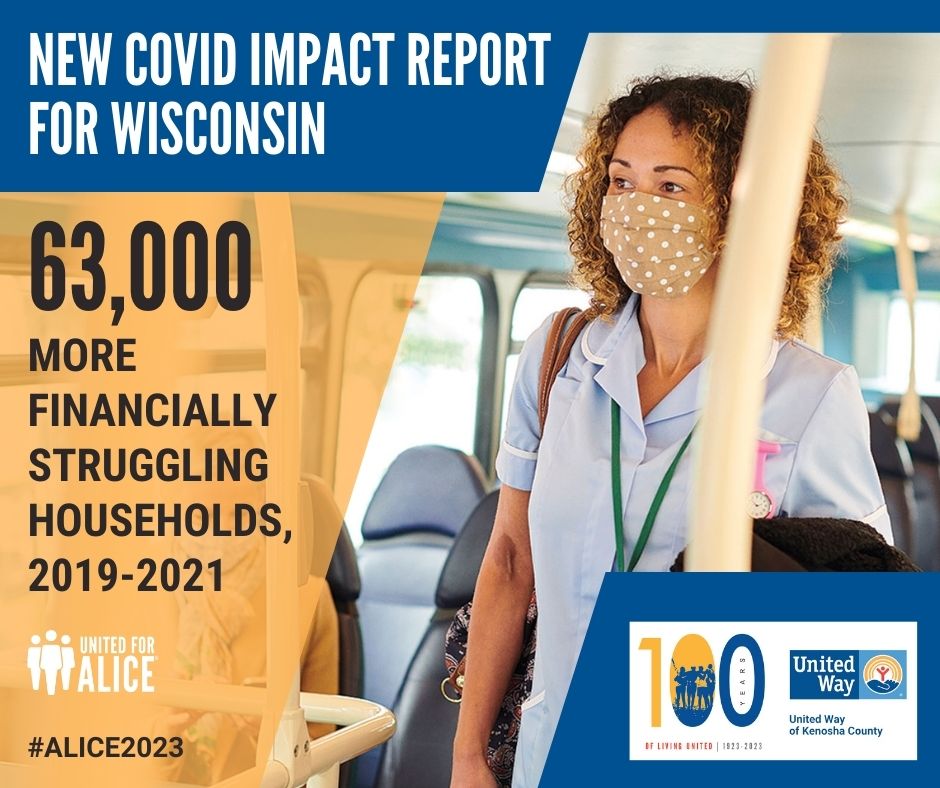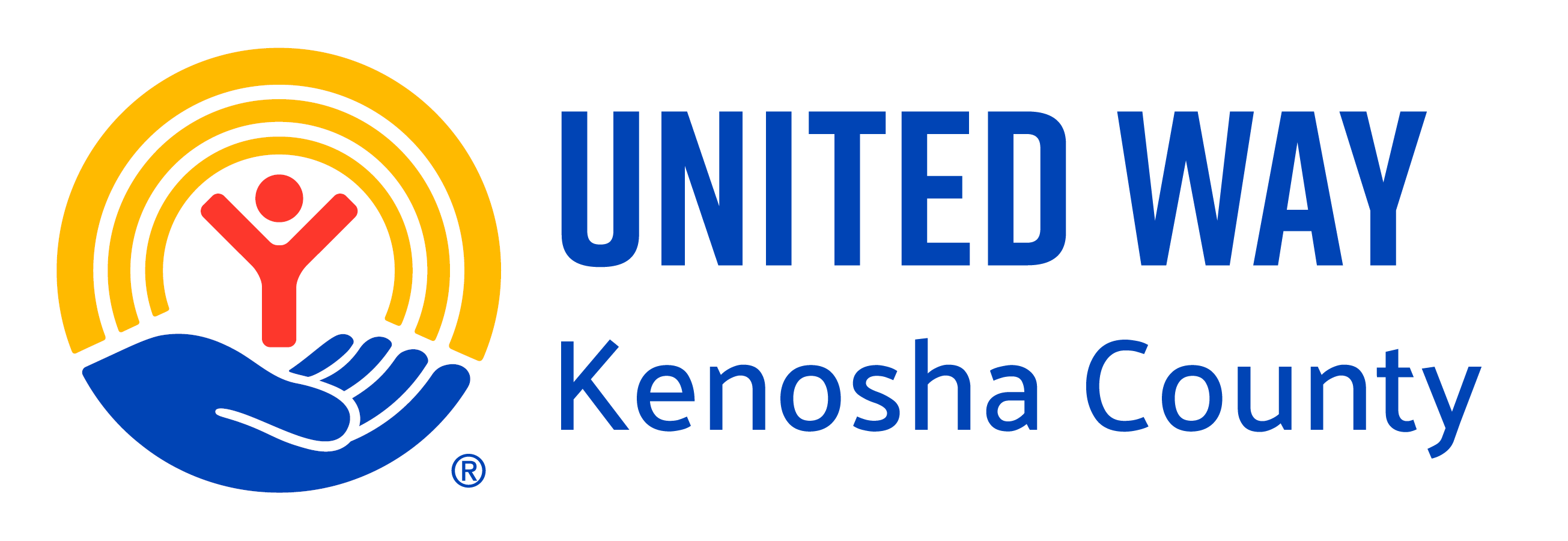
New ALICE Report shows pandemic aids temporarily blunted the financial crisis, yet warning signs are on the horizon
 April 26, 2023 (Kenosha, WI) — The ranks of Wisconsin households unable to afford the basics grew by more than 63,000 during the first two years of the COVID-19 pandemic, resulting in a total of 835,287 households or 34% struggling to afford the basics by 2021, according to a new report from United Way of Kenosha County and its research partner United For ALICE.
April 26, 2023 (Kenosha, WI) — The ranks of Wisconsin households unable to afford the basics grew by more than 63,000 during the first two years of the COVID-19 pandemic, resulting in a total of 835,287 households or 34% struggling to afford the basics by 2021, according to a new report from United Way of Kenosha County and its research partner United For ALICE.
The calculation includes the 267,433 households in poverty as well as another 567,854 families defined as ALICE (Asset Limited, Income Constrained, Employed), earning above the Federal Poverty Level but less than what’s needed to survive in the modern economy. ALICE families have been overlooked and undercounted by traditional poverty measures. ALICE is the nation’s child care workers, home health aides and cashiers heralded during the pandemic – those working low-wage jobs, with little or no savings and one emergency from poverty.
ALICE in the Crosscurrents: COVID and Financial Hardship in Wisconsin shows that the total number of financially insecure households rose by 8% between 2019 and 2021 – roughly four times the 2% increase in the state’s overall population. The number of ALICE households increased by 63,400 during that time. In contrast, there were 21,667 more families in poverty.
Wisconsin ranked 7th in financial hardship among all 50 states, with one of the nation’s lowest percentages of households struggling to make ends meet in 2021.
Kenosha County residents are slightly better off than Wisconsin residents overall with 32% struggling to afford the basics by 2021. The number of ALICE households in Kenosha County increased to 67,810 in 2021 with 1,639 more families in poverty than in 2019. Kenosha ranks 21st in financial hardship among all 72 Wisconsin counties. That’s in comparison with 35% in neighboring communities Racine and Walworth Counties.
“It could have been so much worse for these families, whose struggle to feed their families, afford health care and access quality education was often hidden in plain sight until the pandemic,” says Carolynn Friesch, CEO United Way of Kenosha County. “Equipped with the ALICE name and data, we can do even better to develop effective policies and track our progress toward reducing financial hardship in Kenosha County. We have an opportunity to build on what was learned during the pandemic as ALICE continues to face economic uncertainty.”
While job disruptions and inflation delivered significant financial pain, a combination of pandemic supports and rising wages did help to blunt what could have been a deeper financial crisis, the report finds. However, as some benefits are peeled back, and inflation persists, signs of greater financial stress are on the horizon.
“Clients who were relying on COVID funds for support have found themselves searching for other sources of income and doing more, like fighting for their children in court, with less,” says Jennifer Paine, executive director at Women and Children’s Horizons. “While we are happy that the pandemic restrictions are unwinding, we must also prepare for the aftermath that will leave our clients in, too.”
According to the report, for a family of four with an infant and a preschooler, the annual ALICE Household Survival Budget, which is the basic cost needed to live and work in Wisconsin, was $78,204 in 2021. The Child Tax Credit and Child Dependent Care Tax Credit helped to soften the blow, bringing the family Survival Budget down to $63,324.
Even with the variety of temporary pandemic supports available, in 2021, a family of four with two-full time workers earning salaries as a retail salesperson and a cashier – two of the most common occupations in Wisconsin – fell short of affording the family budget by $4,596, or 6%.
“A positive change during the pandemic was that tax credits, stimulus payments and rental assistance were available for ALICE households and provided strong relief,” said Stephanie Hoopes, Ph.D., United For ALICE National Director. “However, as some of these supports come to an end, growing food insufficiency and other indicators reveal continued stress. Ignoring these warning signs places ALICE, our economy and the well-being of our communities at great risk.”
Additional report insights include:
- Racial disparities persist statewide in the rates of financial hardship, with the pandemic exacerbating disparities that have long existed in our communities. Statewide, 64% of Black and 46% of Hispanic households were below the ALICE Threshold in 2021, compared to 32% of white households. In Kenosha County, 60%, 39% and 28%, respectively.
- Black households, young households, and single-parent households had among the highest rates of hardship. More than half – 62% – of Wisconsin’s households under 25 years old could not afford basics in 2021.
- In 2021, 65% of the 20 most common jobs in Wisconsin paid less than $20 per hour. As a result, many of these top jobs still had a substantial percentage of workers who were either ALICE or in poverty in 2021.
- In Federal Reserve surveys, the percentage of respondents who were either ALICE or in poverty reported seeing emergency savings drop from 33% in October 2019 to 31% in November 2021. Meanwhile, those survey respondents who were financially stable saw emergency savings rise from 64% to 75%.
To read the report and access online, interactive dashboards that provide data on financial hardship at the state, county and local level, visit United4ALICE.org/ALICECrosscurrents.
To view this press release as a PDF, please click here.
